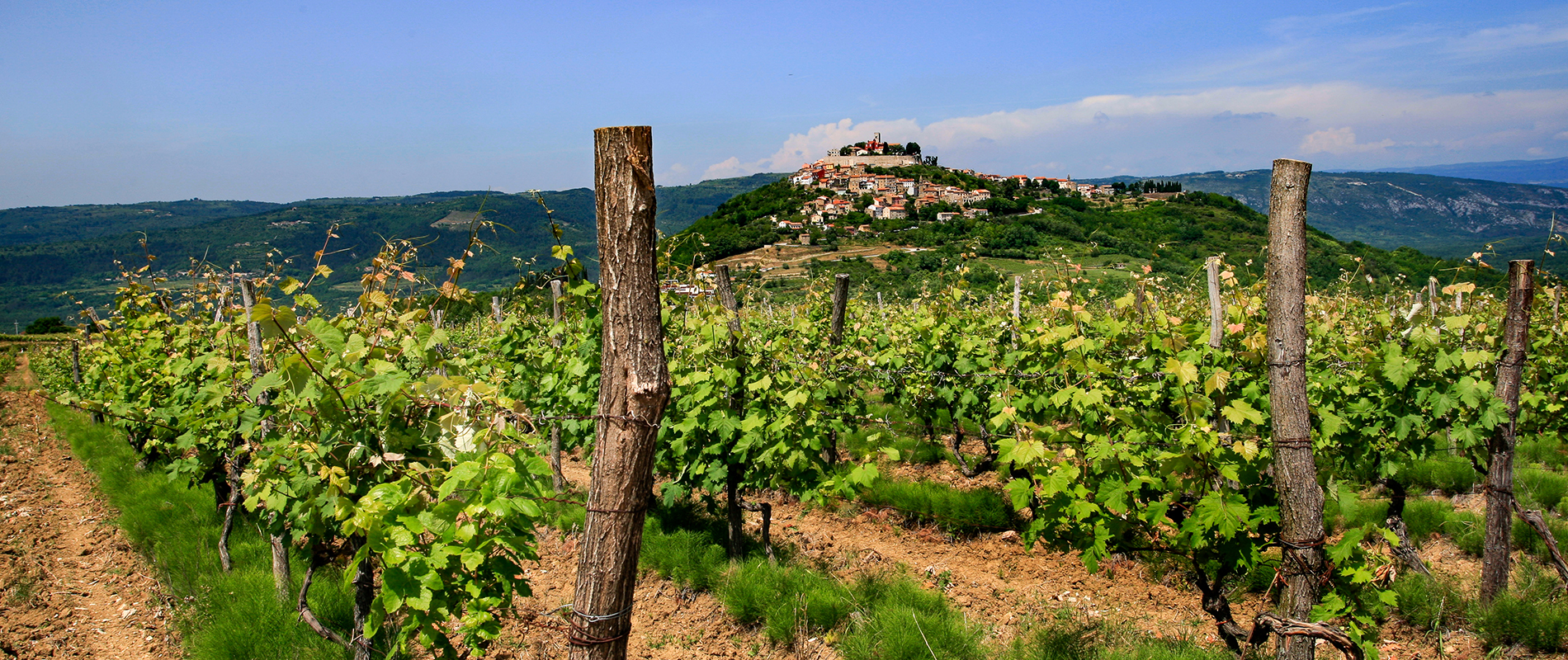
Croatia is best known for its multitude of islands and pristine national parks which draw visitors to its south, but don’t let the allure of sunny Dalmatia distract you from discovering the hidden gem that is Istria. This heart shaped peninsula in Croatia’s northwest boasts a verdant interior made up of truffle-rich forests, fertile valleys, olive groves, vineyards, and rolling hills, crested by hilltop settlements and stone-built villages. Its rocky, indented coastline is dotted with colorful fishing villages and ancient port towns.
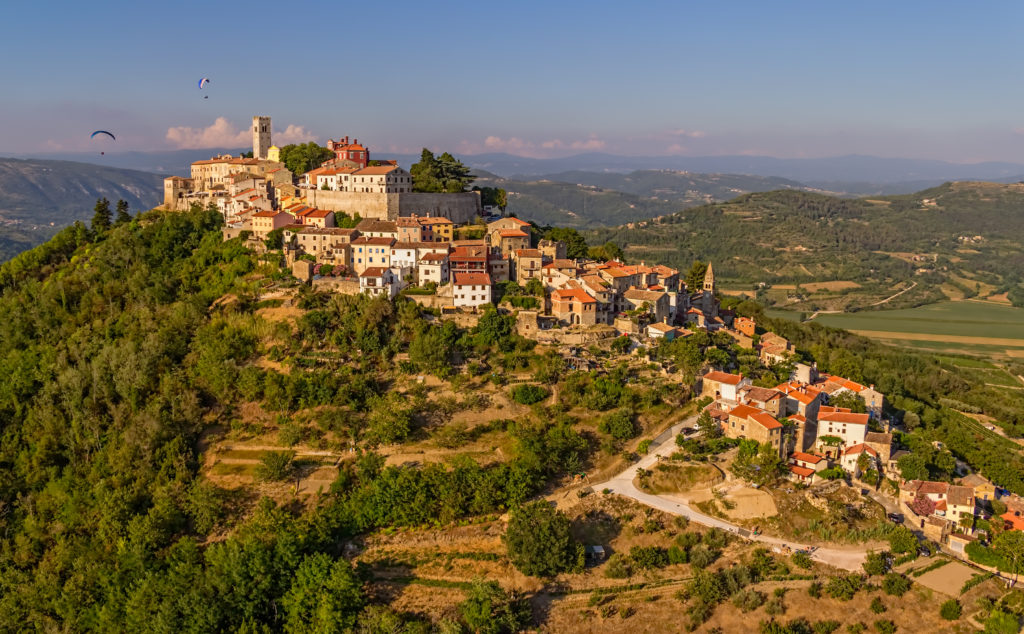
Istria’s inland is an area of exceptional beauty, a rural landscape of undulating hills, perched atop which you will find charming medieval villages. One of the most popular hilltop towns, and also the most picturesque, is Motovun, the birthplace of racecar driver Mario Andretti. The historic town center boasts a 13th century bell tower and municipal palace, cobbled streets, and shops selling local products. For a small fee you can walk the walls which surround the city and enjoy breathtaking views of the surrounding countryside.
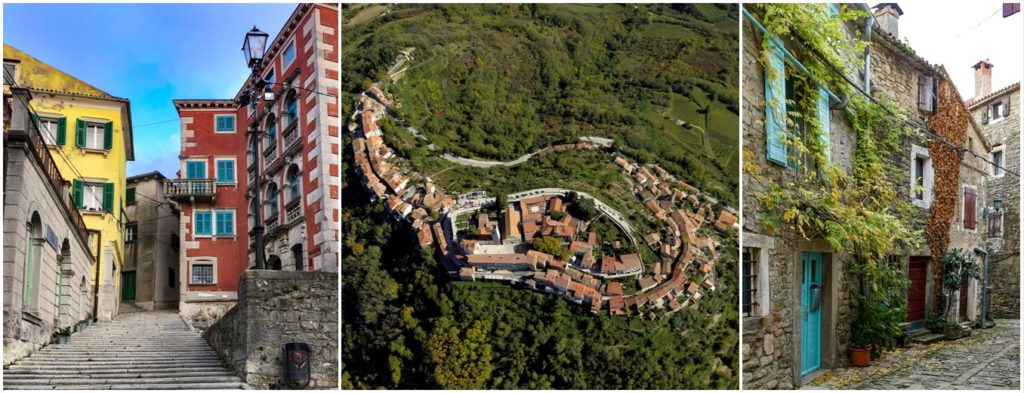
Just ten miles away you’ll find Grožnjan. Once all but deserted, artists and musicians began to flock to the town in 1965 after encouragement by the Yugoslav government. The formerly abandoned houses are now home to more than 20 art galleries displaying the works of local painters, potters and sculptors. Additionally, it is home to a summer music school for young musicians, which often holds recitals and concerts in the town’s square. Farther south, overlooking the seaside town of Rabac, is Labin. Once a coal-mining town, the historic center of Labin displays colorful houses, a mixture of Gothic, Renaissance, and Baroque architecture as well as a number of Venetian palaces and churches. One such palace, the baroque 18th-century Battiala-Lazzarini Palace, now houses the Labin Public Museum, which outlines the area’s history from ancient times to present, including a realistic re-creation of a coal mine. Those who climb Labin’s winding streets to the fortress atop the town will be treated to panoramic views of the sea, the resort towns below, and the rocky island of Cres.

It’s no surprise that Croatia’s first Michelin starred restaurant, Monte, finds its home in Istria. The soil composition and microclimate make the region ideal for producing both wine and olive oil. The verdant forest located in the valley of the Mirna River is a prime location for truffle hunting. And to top it all off, the proximity to the sea – specifically the clean, clear waters of the Kvarner Gulf, famed for its delicate scampi – provides succulent fresh seafood. With direct access to so many local delicacies, it’s the ideal location for talented young chefs to make a name for themselves. In addition to fine dining, there is no shortage of rustic taverns and family run farms serving traditional cuisine. Truly, Istria is a foodie’s paradise.
When traveling the region, one should be sure to make time to revel in all of its gastronomic offerings.
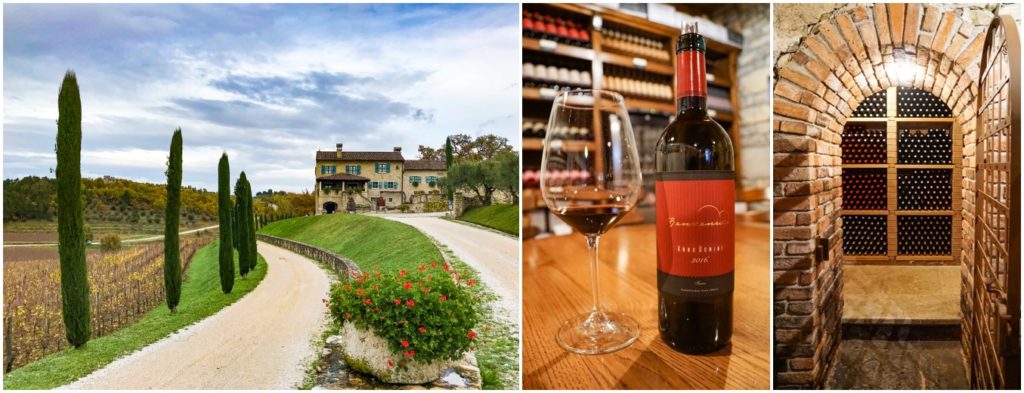
Taste the region’s main local grape varieties, white Malvazija Istriana and ruby red Teran, at one of the many charming wineries. Near the town of Momjan, Kabola, a certified organic wine producer owned by the Markežić family, has been making wines since 1891. They offer a variety of tasting options at their beautiful stone farmhouse set among their vineyards. Meanwhile, nestled in the narrow cobblestone streets of the village of Kaldir, the Benvenuti family offer tours and tastings of their facilities as well. Their grapes are grown in several specific “micro-locations” chosen to give their wines specific mineral characteristics.
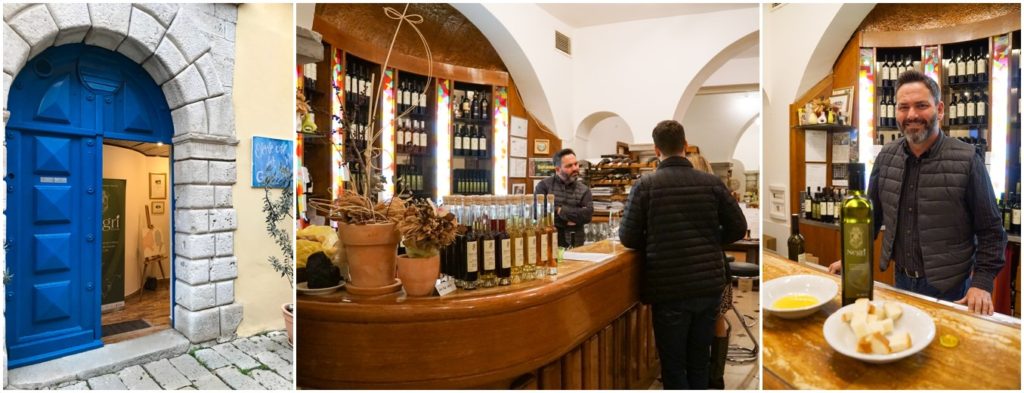
Olives have been cultivated in Istria since Roman times, but it is only in recent years that the region has gained worldwide recognition for its olive oil. In truth, Croatia as a whole is often overlooked as an olive oil producing country due to the relatively small quantities produced there. But what Croatia lacks in quantity, it makes up for in quality, with Istria having been named the ‘Best Olive Oil Region’ by the Flos Olei olive oil guide for the fifth year in a row in 2020. Among the top Croatian olive oil producers is Negri, family run by William and Anessa Negri. The Negri family has been producing olive oil since the Venetians controlled the region and offer tastings in their historic palace which now serves as a “Gastro-Art Gallery.” Here you can sample Negri olive oils, wines, and liqueurs while learning about production, surrounded by the artworks of Anessa.
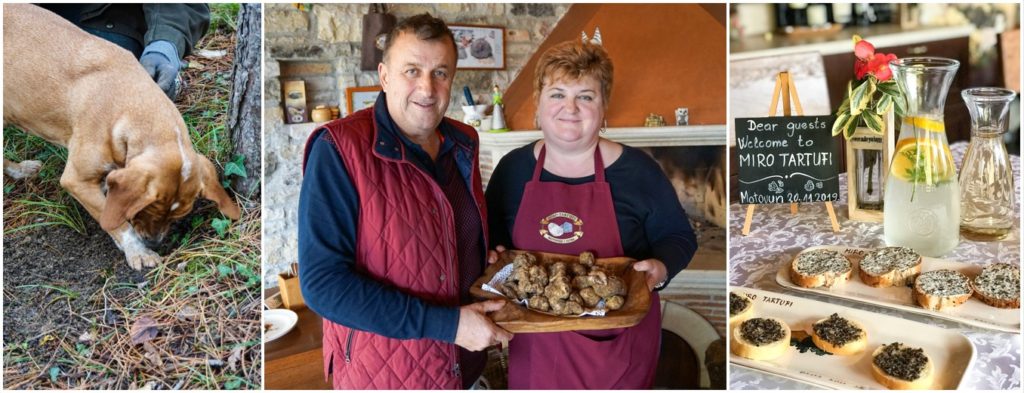
Truffle laden dishes can be found in restaurants all across Istria, but for the full experience consider joining a truffle hunt. Miro Tartufi is comprised of husband and wife team Miro and Mirjana Kotiga. From their home in Motovun, they lead daily expeditions into the nearby forest with their carefully trained dogs, Bella and Lila. The experience begins with a welcome drink and introduction by Mirjana, followed by a guided walk through the forest with Miro. Bella and Lila run ahead, playing and sniffing until suddenly one starts to dig. This is Miro’s cue to gently unearth the valuable tuber, and reward his faithful dogs. Once back from the hunt, enjoy a sampling of gourmet truffle products – oils, spreads, cheeses, and sausage – while Mirjana demonstrates and serves a classic Istrian dish – scrambled eggs with freshly shaved truffle. For dessert, chocolate cake topped with truffle honey and more freshly shaved truffle offers the perfect finishing touch.
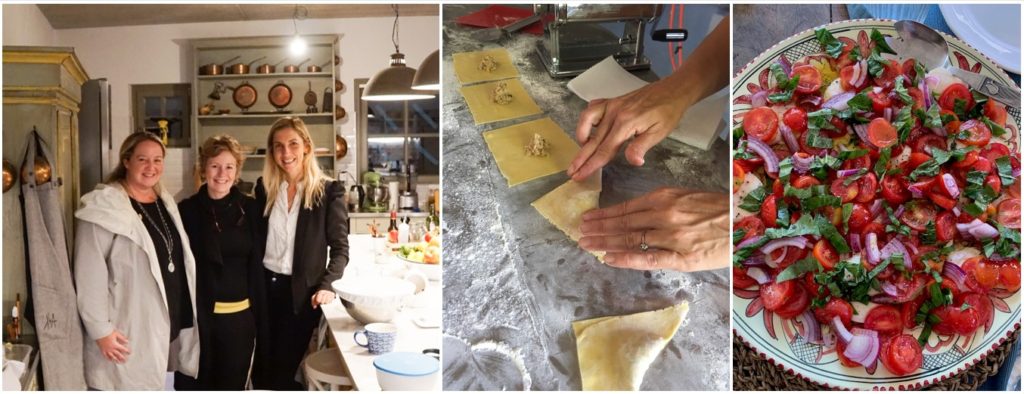
For those seeking a fully immersive introduction to Istrian cuisine, celebrity chef and cookbook author, Ana Ugarkovic, offers cooking experiences out of her home in the small village of Mrgani. Depending on the season, the day includes a walk through the nearby fields to forage for wild asparagus or other edible plants to incorporate into the day’s menu. After preparation of a family style three course meal, enjoy a grappa in the courtyard or by the fireplace.

The echo of Ancient Rome can be heard throughout Croatia, though it is perhaps loudest in Split, home to Diocletian’s Palace, and in Pula, where the Arena of Pula stands triumphantly in the center of the city.
It is the sixth largest Roman arena in the world, and one of the best preserved. The amphitheater was built in the 1st century AD during the reign of Emperor Vespasian when Pula was the regional center of Roman rule. Once the site of gladiator fights, and later, in the Middle Ages, home to knights’ tournaments and fairs, these days, the arena is used for many different events such as the Pula Film Festival, concerts, opera, ballet, and sports competitions. Besides the Arena, Pula is home to numerous monuments of Roman architecture. A short stroll away, the Temple of Augustus stands in what was once the city’s Forum. Bombed during the Second World War and completely destroyed, it was painstakingly rebuilt in the years that followed. It now houses a collection of ancient stone and bronze sculptures. Another popular attraction is the Triumphal Arch of the Sergii, also known as the Golden Gate, which was erected by the powerful Roman Sergii family in memory of three deceased family members who held important positions in the city. The arch was named Porta Aurea or the Golden Gate because of its richly ornated arch. Historical attractions aside, Pula is a busy port city which offers an interesting look at the everyday lives of Istrians.

Along the craggy shoreline, the rolling hills of Istria’s bucolic interior make way for robust fishing villages and seaside port towns, perhaps the most charming of which is Rovinj. Italophiles will feel right at home here as most of the population is bilingual, speaking both Italian and Croatian – even road signs in Rovinj are written in both languages. This is a testament to Istria’s tumultuous past, having been a part of Austro-Hungary, Italy, Yugoslavia, and finally Croatia all in only the last 100 years. Though each flag flown has left an indelible mark, Rovinj carries on seemingly unchanged. The fishing boats which fill the harbor still come and go, the bells of St. Euphemia’s campanile still ring out high above the city, carrying on with business as usual as they have for hundreds of years. It is this unchanging nature, this timelessness, which is part of Rovinj’s charm, and adds to its romance. Steep, narrow streets wind the interior of the old town, lined with boutiques, galleries, and colorful doorways which are charmingly timeworn. Once an island, the old town of Rovinj was connected to the mainland in 1763 when the narrow channel separating it was filled. Though now a peninsula, it still has an insular feel, with the sea as much a defining characteristic of the town as any of its architecture is. While visiting, be sure to sample the fresh seafood at one of the many waterfront restaurants, such as La Puntulina, where tables line the rocky shore. It’s the perfect place to watch the sun kiss the sea as it sets for the evening.
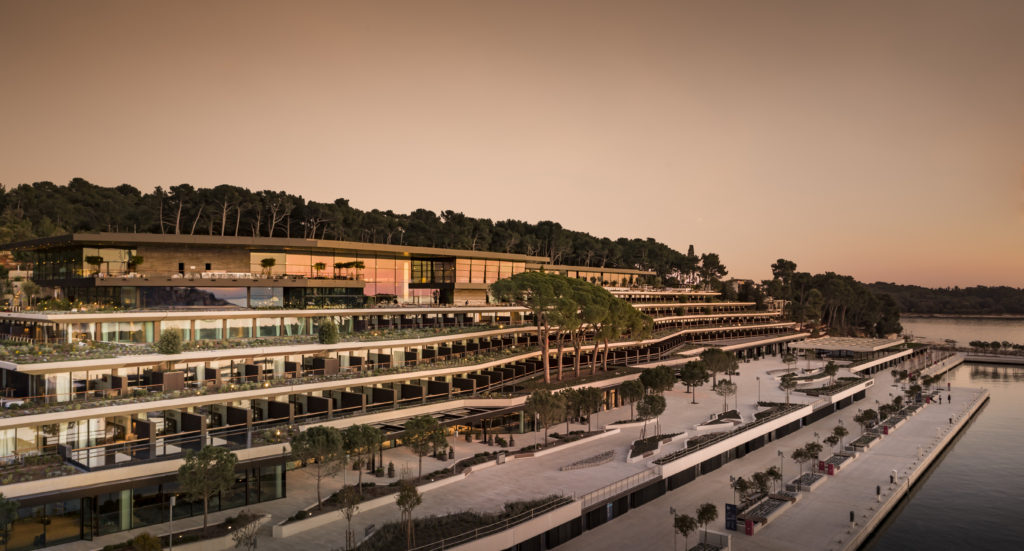
Istria’s rustic countryside and medieval villages may not seem the most likely backdrop for some of Croatia’s most exciting contemporary properties, but it is. From high design and eye-catching architecture to traditional style and understated luxury, you can find a hotel to meet any taste and budget in this multifarious region.
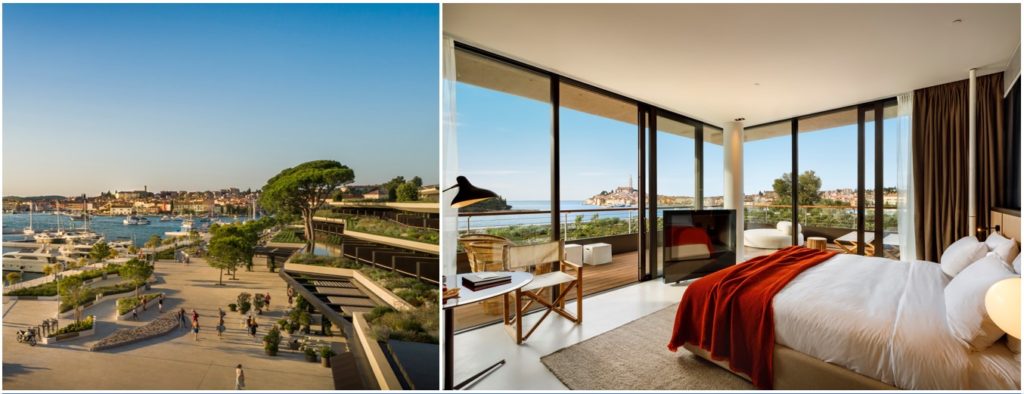
Opening to much acclaim for the 2019 season, the Grand Park Hotel sprawls across a gentle slope along the marina, stepping down toward the Adriatic Sea. Topped with a series of planted terraces, the hotel is designed to have a minimal impact on the natural landscape. It was one of several hotels in the area designed by Croatian architecture firm 3LHD Studio. Its interiors are the vision of Italian architect and designer Piero Lissoni, who uses deep earth tones to contrast the blue of the sea and sky, the effect of which seems to enhance the spectacular view of Rovinj across the bay – colors pop in such a way that it feels almost artificial. A true five-star property, it is no surprise that the Grand Park Hotel has already seen its share of celebrity guests.
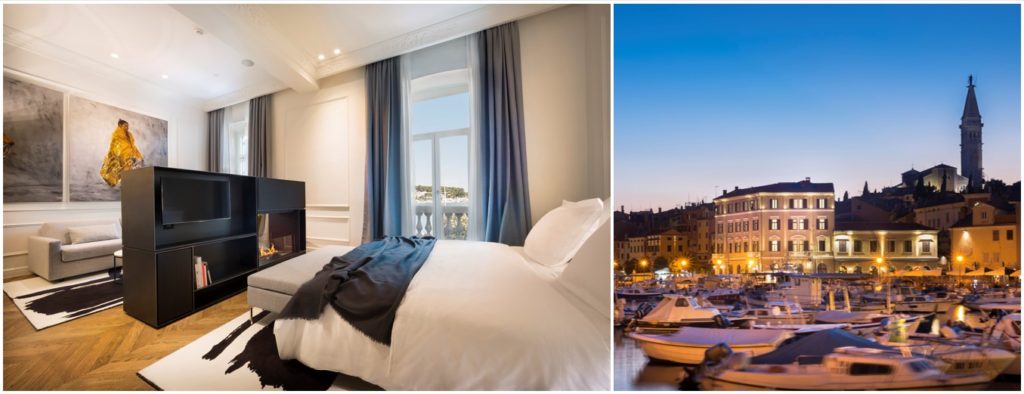
Just across the bay, in a lively square of Rovinj’s old town, the Hotel Adriatic offers a boutique alternative to The Grand Park’s swagger. The Adriatic’s café and restaurant offer the perfect terrace from which to watch the world go by and observe the hustle and bustle of the fishing and sailing boats in the harbor. The rooms are tastefully decorated with modern furnishings, contemporary art, and thoughtful touches such as room mists, developed by local perfumerie Profumo di Rovigno, to suit your mood.
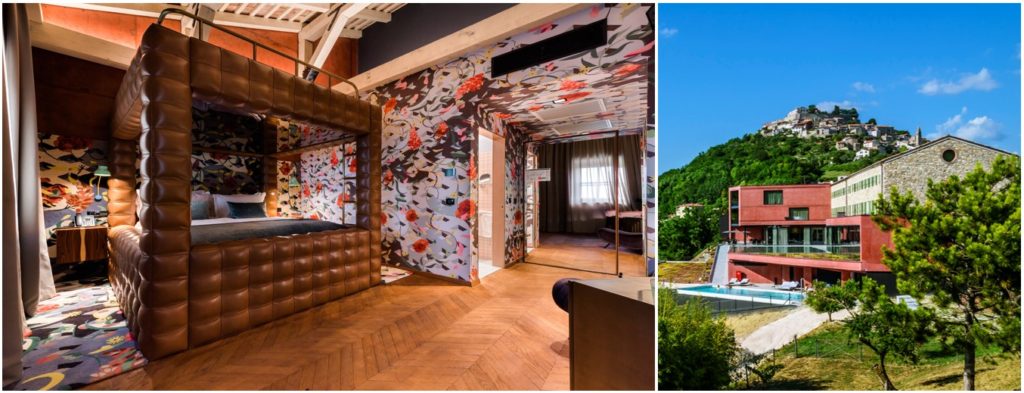
A short drive inland, the Wine & Heritage hotel ROXANICH is shaking things up in Motovun. Not the typical heritage hotel, this new property is the creation of boutique winemaker Milan Rožanić, and architect/designer Idis Turato. Behind the traditional stone façade guests will find a flamboyant interior, replete with bold design elements and bespoke furnishings. Rooms feature bright wallpaper, or sometimes carpeted walls, “family size” bunk beds, wood beamed ceilings and marble bathrooms. Deep below the guestrooms, the Roxanich cellars offer opportunities for guests to do tours and tastings.
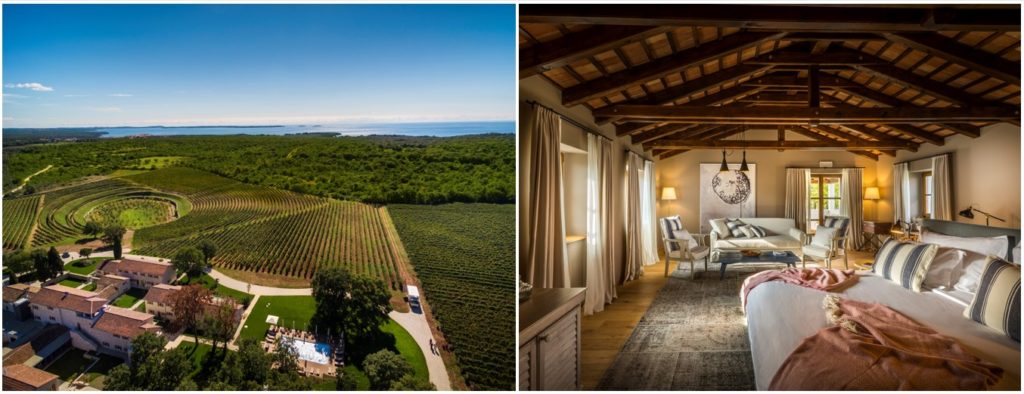
For those seeking a more traditional wine hotel experience, there is no better escape than the Meneghetti Wine Hotel & Winery. Originally known as the Villa Meneghetti, the Meneghetti Wine Hotel & Winery began as a single stone estate built at the beginning of the 20th century amid expansive vineyards and olive groves. It has since expanded to include rooms, suites, and villas, all tastefully furnished in traditional Istrian style which melds the local, Mediterranean aesthetic with modern elements. A true example of understated elegance. An excellent restaurant only furthers the appeal, as do the options for wine and olive oil tastings, the spa and wellness area, and proximity to the beach – just a bike ride away.
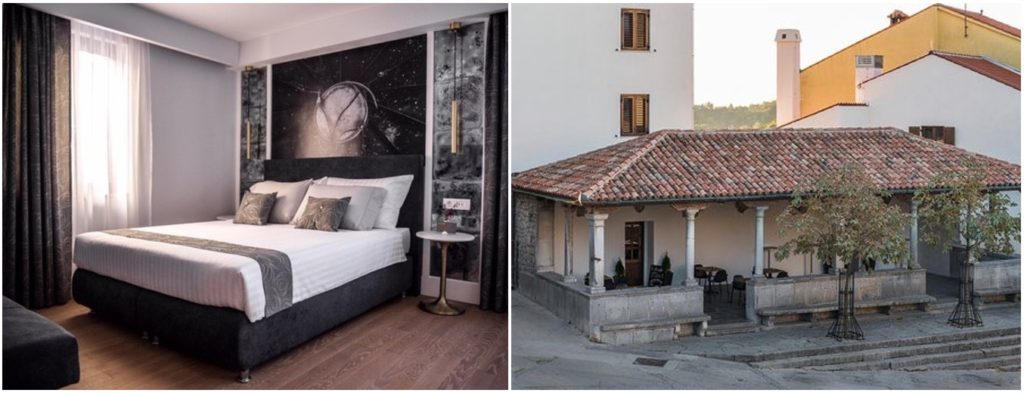
Roughly an hour away, a new concept takes shape in the form of La Loggia, a “diffused hotel” making its mark on Labin. La Loggia will eventually employ the albergo diffuso model, having a central reception with rooms in various structures around the small town, but at the moment it is contained to the small building behind the town’s pillared 16th-century loggia. An intimate setting with a warm and friendly staff, this property appeals to travelers who seek authentic experiences far from crowds, but still wish to retain modern conveniences. The eight light-filled guest rooms feature modern décor and contemporary photographic prints. The bar and lounge is the ideal spot for a nightcap, and is also occasionally the venue for live concerts of acoustic guitar, piano, jazz and blues on the weekends.
Tasteful Croatian Journeys is available to design your custom luxury itinerary through Istria in any season and can guide you in planning activities best suited for your particular dates of travel. Shoulder seasons (April/May, September/October) make for a wonderful time to visit Istria, with mild temperatures and minimal crowds. Contact us for more information and to begin planning your Istrian interlude.
 About the Author:
About the Author: